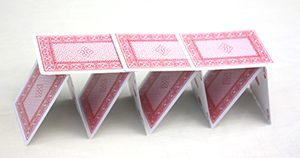 Structure is a big issue in a lot of writing, especially among inexperienced authors. Often, inexperienced authors will spill everything on the page, and let the narrative take them – and their story – where it will. This might feel natural to them. If it feels natural, they might believe it’s justified. And, as far as they go, the narrative might be perfectly understandable, but this is only because they know their story. A reader doesn’t. A reader needs to be guided through the narrative. If there’s structural issues, they’ll be jolted. Be jolted often enough, and they’ll lose interest, finding it too hard to follow. Be jolted bad enough, and they’ll be shaken right out of the story.
Structure is a big issue in a lot of writing, especially among inexperienced authors. Often, inexperienced authors will spill everything on the page, and let the narrative take them – and their story – where it will. This might feel natural to them. If it feels natural, they might believe it’s justified. And, as far as they go, the narrative might be perfectly understandable, but this is only because they know their story. A reader doesn’t. A reader needs to be guided through the narrative. If there’s structural issues, they’ll be jolted. Be jolted often enough, and they’ll lose interest, finding it too hard to follow. Be jolted bad enough, and they’ll be shaken right out of the story.
This doesn’t mean structure always has to be straightforward. It can be innovative. Martin Amis’s Time’s Arrow – which was shortlisted for the 1991 Booker Prize – runs backward, starting with the narrator’s death, and seeing him become younger and younger. Everything is reversed – the narrative, the dialogue, the events.
Each chapter of Christos Tsiolkas’s Barracuda alternates between two timelines, using a different POV in each – first person in the present, third person in the past. Through this technique, we’re immediately aware the character has had some sort of downfall and struggling to reconcile his life, and then we get to know him as he’s younger, driven, and pursuing the goal of becoming an Olympic swimmer.
In both these examples, there’s a logic to the structure, so the reader can become comfortable and trust that the author will – ultimately – get them to their destination. If that trust isn’t built, the reader will disinvest. Using the example of Barracuda, if the first ten chapters alternated between present and past, and then there were three successive chapters in the past, the reader would query why the story has detoured. If there’s no logic to it, the reader will lose faith that the story has a purpose, and that’s one thing any author can’t afford. If a reader doesn’t believe in your ability to tell a story, they’re certainly not going to believe in your story.
But writers do battle with structure – often because they cannot filter an overflowing imagination into an articulate and purposeful journey. Instead, it’s the randomness. And in the randomness, there’s chaos, tantamount to taking a jigsaw, doing half of it, forcing one/quarter of the pieces where they don’t belong, and letting the rest fall where they may. You’ll get an idea what the whole picture is meant to be, but never really see it properly.
In the next blog in a fortnight’s time, we’ll look at mapping structure.

thank you – I identified with the randomness and the jigsaw